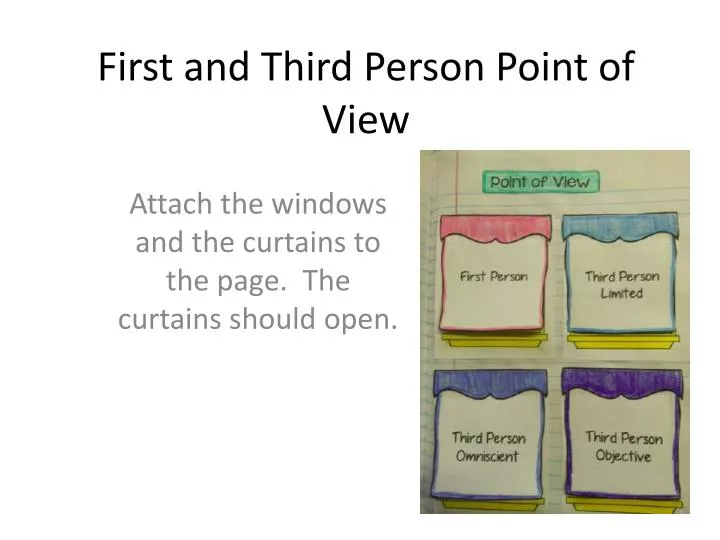

Omniscient is a fancy word that means “all-knowing.” So, third-person omniscient point of view means that the narrative is told from the perspective of a narrator who knows the thoughts and feelings of many characters in the story. We are going to start with the most common one, third-person omniscient. There are three different third-person points of view. The key pronouns for third-person point of view are: In other words, it was not told from the point of view of the narrator or the reader. If you have read a narrative lately, it was most likely written in third-person point of view.

Second-person perspective can also create an uncanny, almost alienating, effect. Just like the first-person perspective, second-person perspective can create a story that seems more intimate to the reader. There is something scary about the abandoned amusement park.You always wanted to win the lottery, but you never thought it would really happen!.When you picked up the phone, there was no one on the other line. You walked to the corner, where you heard a telephone ringing in the phone booth.Here are a few examples of second-person narrative: You know, like those old Choose Your Own Adventure books we all read. It’s when you, the reader, seem to become part of the story. Just to be clear, second-person point of view isn’t the same thing as when the author addresses the reader directly. More often, poetry or short stories might include bits of second-person point of view. It’s generally considered a no-no to write a novel in only second-person point of view.

The key pronouns for second-person point of view are: What we mean is that second-person point of view is a narrative that is told from the reader’s point of view. Second-person point of view is all about you. It’s a powerful approach, but it can be limiting if you are trying to build a big world, like in science fiction or epics. As the reader, you become aware of everything happening in the story from the character’s perspective. They teased me for always being the last one to arrive.Īs you can see from these examples, first-person narration helps the reader relate to the character.


 0 kommentar(er)
0 kommentar(er)
